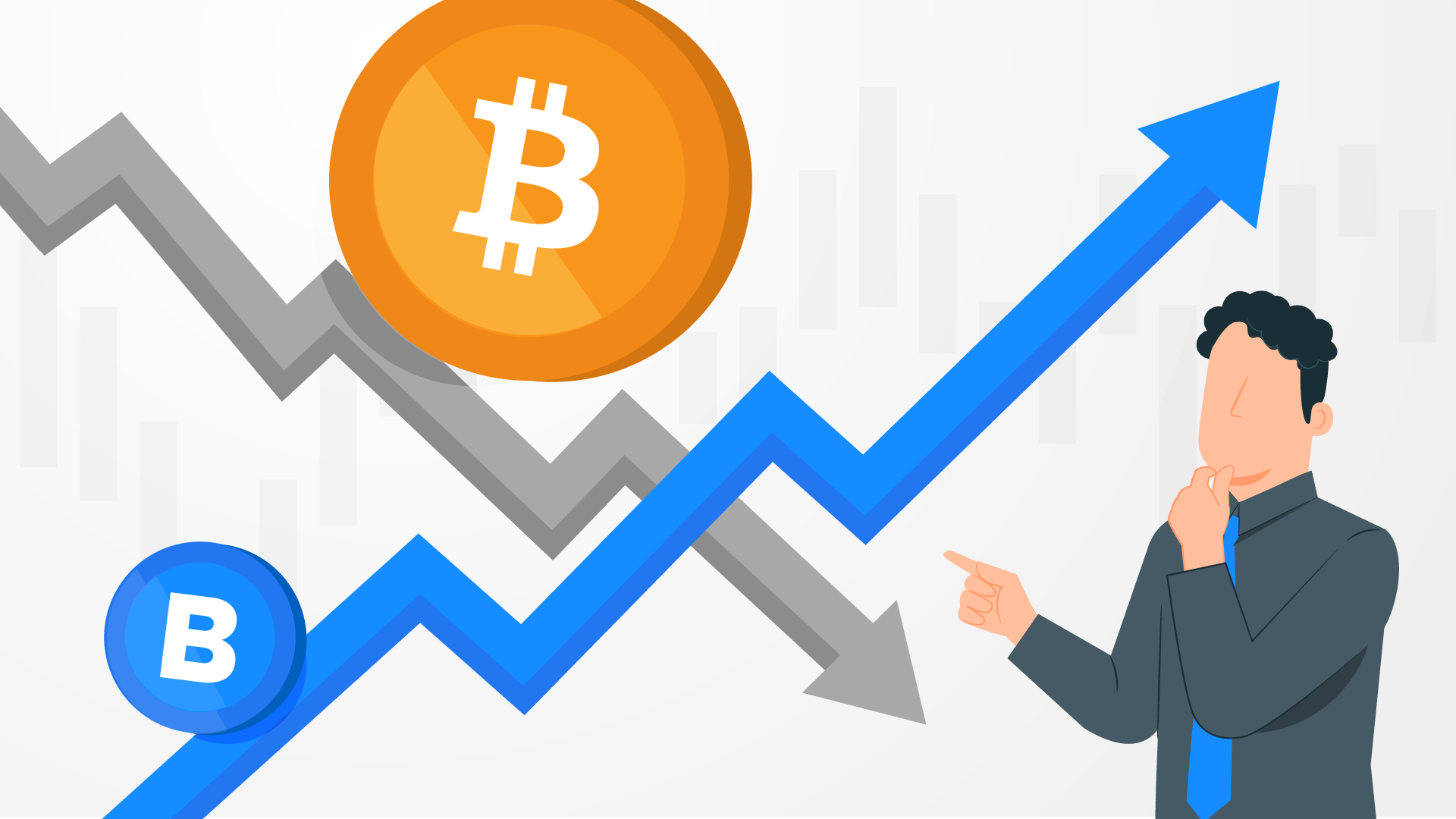Volatility is easily misunderstood, particularly when it comes to traders and investors just getting started. It can serve as more than just a source of risk if managed with caution.
While many see it as their enemy — and rightfully so, as it can be quite damaging for traders — volatility is a key concept that can be used to traders’ advantage. Having a deeper understanding of volatility, like what causes it and how to read it, can help uncover how to use it to your advantage
Double-edged Sword
In simple terms, volatility is the range of price changes over a certain time period. If the price remains relatively stable during a given period, then the volatility is low. Wider price fluctuations indicate high volatility, which not only raises the asset’s risk level but may also open up new opportunities.
Traders and investors tend to look at volatility unfavorably because it can cause significant losses. Whether for digital assets, stocks, or some other assets, a rapid even abrupt price drop means the asset held becomes less valuable than when it was purchased.
Selling it at that time would result in the trader holding less value than before, which is counter to the goal when they bought it. The trader then has two options, either wait for the price to recover, or cut their losses, sell at a lower price, and move on.
More experienced traders, on the other hand, know that every correction tends to be followed by a recovery unless the asset in question is bound for a permanent drop, like the stock of a failing company. This tendency of volatility to go both ways can be used to buy assets when they are at their estimated lowest point, then watch as their price recovers, allowing the trader to sell at a higher price and make a profit.
That’s the core concept behind using volatility in trading — trying to determine when the price is at its bottom, or the highest point that it can reach in the foreseeable future. In other words, to use volatility effectively, traders need to master price prediction.
What drives volatility?
Volatility can be caused by a number of things, including company performance, political events, and economic factors, including factors that impact the particular industry. In crypto, for example, whichever asset you trade, you must keep an eye on Bitcoin’s performance.
Bitcoin is the largest cryptocurrency by market capitalization, thus also the most dominant one. In most cases, its performance will directly impact the rest of the industry, which means that most assets will follow it, whether it goes up or down.
Using volatility to your advantage
Volatility levels for different assets are not all created equal. Some assets, like growth stocks, may seem highly volatile at first, but their price changes — typically involving anywhere between a few cents to a few dollars at a time — pale in comparison to cryptocurrency volatility, where assets can go up by tens, hundreds, or in some cases even thousands of dollars.
Take Bitcoin, for example. It is not unusual for the coin to go up or down by anywhere between 5% and 10% on a daily basis. Its price climbed 10% in just three days before hitting a new all-time high on November 11, 2021, then proceeded to drop nearly 6% within 12 hours later.
So how do you manage volatility? How to make sure you don’t lose a fortune because of it? It may not be simple, but there are steps one can take to ensure that their trades have a greater chance of being successful.
Volatility can mean opportunity, as downward volatility offers a chance to buy assets at a lower price. Of course, this is only applicable if you have a positive outlook, based on some research and analysis, on the asset’s price in the long term.
The most important thing is to time your purchases properly. Yet that is also the most difficult thing to do, as it is virtually impossible to predict tops and bottoms precisely, even if that’s what experts try to do using technical indicators. For that matter, and beyond general expectations, keeping a keen eye on the market and reacting quickly to any new changes are the more tangible fallbacks for gauging future performance.
Your odds of making profits will be improved by investing in good projects and strong companies, rather than choosing the faster-growing, riskier ones. The latter can help earn quick profits, but the associated risk can be just as high.
Strong established companies may take time to see their prices grow significantly, but they typically bring more certainty in the long run. Even if they start experiencing losses, many offer fundamentals that give them a better chance to weather the storm until the next recovery.
How to avoid (major) losses?
The first thing to do to ensure your potential losses will not be so damaging is to start small. Trading is a complex game of buying and selling, and there is much to learn — from new jargon to complex strategies, and more. Traders eager to start tend to enter the market before they are ready for it, which typically causes them to experience losses. A rush to start trading with the hopes of quick gains is perfectly normal, but you’d be well advised to start small.
Furthermore, stay focused, do the research, and understand the numbers — but don’t trust your emotions. Emotions detract from the facts and data. Fear leads to missed opportunities as much as the fear of missing out can lead to taking unnecessary risks. Rash ambition and overconfidence also affect trading behavior with potentially negative outcomes for your portfolio.
Unlike emotion, intuition is an asset that a good trader has, but trained intuition takes time to develop and sharpen enough to be trusted. That process requires practice, experience, and inevitably some losses. The gains in the early stages of trading are likely to be small, especially if compared to the hope at the time of purchasing. But over time, higher gains replacing lower losses help signal progress in the journey.
Lastly, it is always a good idea to diversify your portfolio — so yes, put your eggs in different baskets. Even so, new traders should keep the number of different invested assets relatively low, resisting the temptation to try their luck with several assets. Tracking the price performance of numerous assets is difficult in practice, especially for those just learning the ropes. It is entirely possible to diversify with a limited but focused portfolio of different assets, even one that provides a firm foundation from which to grow.
Riding the Waves
Volatility is a source of fear for many traders, ultimately because it is misunderstood and cannot be controlled. But it can also be a source of growth given sufficient understanding, experience, and sufficient awareness of the risk. Just ask pro surfers how many times they have crashed into the water before riding the waves.
Indeed trading is different from surfing, but the level of perseverance required is not all too different. The extensive practice involves many trials and errors, and trading amid volatility, it also entails potential losses that you can afford. But, profits or losses aside, the longer-term reward is gaining a tool for your advantage while removing an obstacle to your goals.
Our aim is to create a platform that offers users the most enjoyable trading experience. If you have any feedback, please reach out to us at feedback@btse.com or on Twitter @BTSE_Official.
Note: BTSE Blog contents are intended solely to provide varying insights and perspectives. Unless otherwise noted, they do not represent the views of BTSE and should in no way be treated as investment advice. Markets are volatile, and trading brings rewards and risks. Trade with caution.






